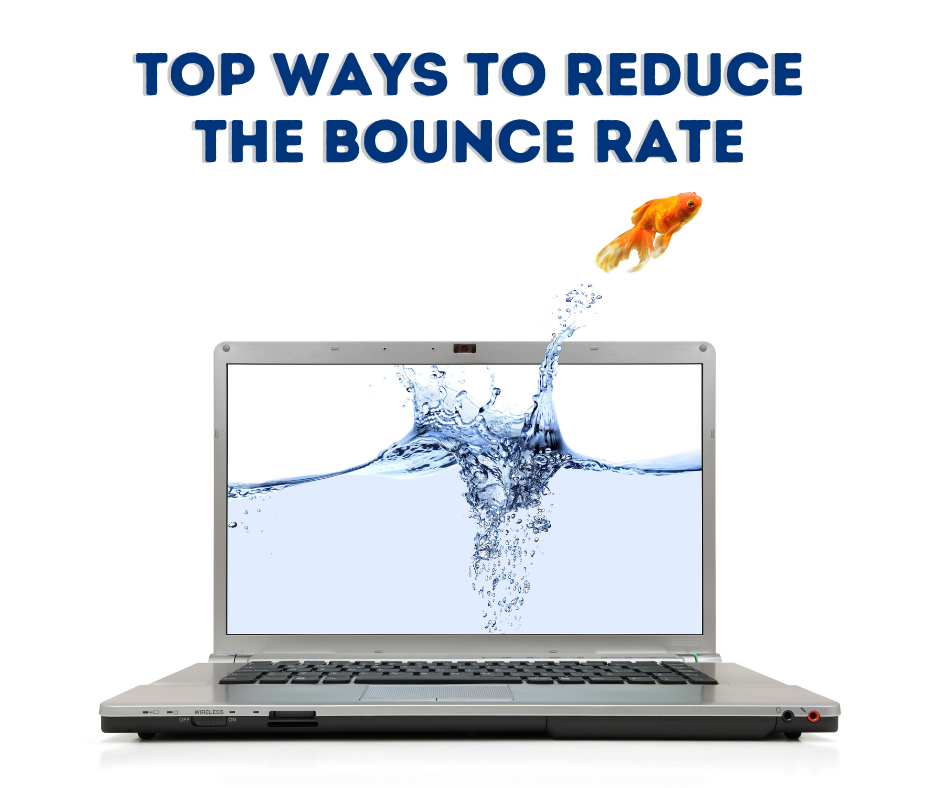
The bounce rate has been troubling the majority of Digital Marketers for a while. A high bounce rate restricts a website to do well in terms of search engine rankings, and traffic. If your website isn’t able to do so well in terms of website rankings, bounce rate is one of the first things that you need to check.
But, isn’t there any way to get rid of a high bounce rate? Well, the Digital Marketing field might consist of a lot of complications, but there are solutions to everything, and most of them are quite simple. In simple words, it’s always possible to reduce the bounce rate of your website. Experts from our SEO agency in Toronto explain them in this blog.
What is the bounce rate?
Firstly, what does the bounce rate mean? The percentage of people landing on your website and leaving your website without visiting the second page of your website is termed bounce rate.
A high bounce rate clearly signifies the fact that your SEO strategy requires a serious tweak. The higher your bounce rate is, the tougher it will be for you to get your website ranked, and boost the website traffic.
Additionally, the high bounce rate also signifies that your website isn’t delivering the user experience that it should. It is a big red flag for Google, and it won’t take much time before penalizing your website. Hence, if you are noticing a high bounce rate for your website, be quick to take suitable actions and reduce the same.
What’s the good bounce rate of a website?
Next, what’s the good bounce rate of a website? The thumb rule says:
1) A bounce rate greater than 80% is bad. If this is the case with your website, you can’t afford on wasting any time before taking the action.
2) The bounce rate from 70-80% is poor. You need to be quick with your actions and increase the user experience to reduce this percentage.
3) The bounce rate from 50-70% is average. It might not bring any immediate consequences for you, but you still need to work on it and reduce the percentage.
4) The bounce rate from 30-50% is good. Your website is on the right track. All you need to do is stay consistent with your strategy and efforts.
Top ways to reduce the bounce rate
Now, let’s the address in the room. Readout some of the most reliable ways to reduce the bounce rate of your website below.
1) Work on the readability of the content: The readability of your content is the first and major thing that makes the visitors leave your website in no time. Of course, who would love to stay on your website, when the readability of your website content is poor?
The poor readability of the content makes users leave your website within a few seconds, hence increasing the bounce rate of your website.
Firstly, you need to write your content in smaller sentences, as they are easy to read and digest. Add bullet points wherever you feel like. Also, use a plethora of charts, images, screenshots, and other graphical forms to validate your content and establish a trust factor.
Also, you can divide your content into multiple sub-headings as it highlights the topics, and hence impart a positive psychological impact on the user’s mind.
Asking questions in your content is another reliable way of making readers feel engaged and participate rather than just reading.
The ultimate goal here is to ensure that the readability of your content is strong enough to make users stay on your website. You can even test the content readability to ensure that your website doesn’t lack this aspect.
2) Craft an inviting call-to-action: Once you have made the users stay on your website, now the onus on CTA to ensure that the users take the action you want. Ensure that you craft a compelling and inviting CTA. It is your CTA that would help engage users and make them complete the action that you desire them to do.
A compelling CTA boosts the usability of your website, and hence provides the visitors with a high user experience, hence making them happily stay on your website.
The more compelling your website CTA is, the easier it will be for the visitors to stay on your website, which would reduce the bounce rate of your website, and increase your conversions considerably.
3) Ensure that there are no excessive popups: Just think of yourself as a user here. Do you stay on a website that keeps on annoying with excessive and unnecessary popups? No, right? Well, then you cannot expect your visitors to stay on your website if it incorporates a large number of popups.
Popups simply annoy users, specifically, when they are unnecessary, and hence increase the bounce rate. Yes, popups do help your email marketing campaign, but that by no means implies that they have to be everywhere.
Additionally, ensure that the popups you use on your website are well-designed, and inviting enough to make people notice, and take further actions. You might or might not feel it important, but it’s extremely important to design inviting popups to make users stay on your website, and even notice the actions that you desire to make them do.
4) Create a fast-loading website: No, it’s not all about the content or popups. Remember, people will read your content only after they land on your website. And they won’t be landing on your website if the loading speed of your website is less.
Even Google hates a website that takes forever to load. Hence, a slow website won’t do any good to your bounce rate and even your website rankings.
So, what’s the ideal loading time of your website? Less than 3 seconds. Ensure that your website gets loaded within 3 seconds. If your website does satisfy this criterion, it’s doing well with the user experience, and if not, it’s time to improve your website loading speed.
The better your website loading speed will be, the higher will be the user experience on your website, and the lesser will be the bounce rate.
5) Use graphics effectively in your content: Graphics come with an amazing ability to make the users stay on your website. The more inviting your graphics are, the more the visitors will stay on your website and the lesser will be the bounce rate of your website.
Use images, screenshots, videos, GIFs, etc. in your content to make the information easily digestible for users.
You can see any amazing website, and you will notice that they have been nailing the graphic part. You can do a thorough competitor analysis and get some ideas from it. There are various tools available like Canva, Pexels, Pixabays, etc. to get high-quality graphics for your website.
6) Keep your content fresh: Providing your users with fresh content is necessary to ensure that you actually deliver some value to your users, and hence make them stay on your website.
Of course, who would leave your website when it offers everything? It’s important to stay updated with the developments of your blog topics and incorporate the same in your content.
Updating your content at regular intervals will make users trust your website, and hence stay for a longer timeframe on it. It will not only reduce the bounce rate of your website and would also increase the organic traffic on your website. Hence, the next most reliable way to reduce the bounce rate of your website; keep your content fresh.
7) Write effective meta descriptions: Numerous Digital Marketers don’t focus on the meta descriptions, which eventually subsides their organic CTR and increases the bounce rate of their website.
Remember, it is your meta description that will be one of the first things viewed by the users. Hence, it’s necessary that you don’t compromise with the quality of meta descriptions at all.
With meta descriptions, you have only a few characters to impress your users and ensure that you absolutely nail these characters. The effective meta description is a sure-shot way to reduce the bounce rate of your website, as it will ensure a great first impression of your website in the user’s mind.
8) Optimize your website for mobile: You need to get it clear that a major chunk of the visitors will be landing on your website by mobile phone.
Hence, it’s important to ensure that your website is well-optimized for a mobile phone. Poorly optimized will make you lose a large number of users, hence increasing your bounce rate considerably.
If the bounce rate of your website is high, check if it is mobile-friendly. And, if you find that it isn’t mobile-friendly, it’s time to take some quick actions and increase the mobile-friendliness of your website.
9) Do A/B testing: If you are confused on what are the factors increasing your bounce rate, figuring them out by conducting A/B testing is one of the most reliable ways to figure them out.
You can create different content strategies and run A/B tests on each of them to see which content strategy works the best for you. A/B testing is one of the best ways to figure out the right strategy for you, and hence ensure that your bounce rate is low.
10) Be right with your content marketing strategy: Content marketing strategy is an integral part of your SEO strategy. People might love your content, and still, leave if you haven’t nailed your marketing.
Be right with the things like link building, social media planning, etc., and ensure that your content marketing strategy is top-notch.
The better your content marketing strategy will be, the lesser people will leave your website, and hence the less will be your website bounce rate.
We hope that you are now clear with some of the best ways to reduce the bounce rate of your website. Bounce rate is critical, and hence it is necessary that you keep a check on it.
If you are looking for experts to take care of your website bounce rate, you can count on Pat’s Marketing, a top-rated SEO company in Toronto to do the job right for you. Our experienced team and our commitment to always deliver our clients with the best makes us the top choice of people when it comes to SEO services in Toronto. To reach out to our top-notch team, connect with us at 888-488-7287 (toll-free).


